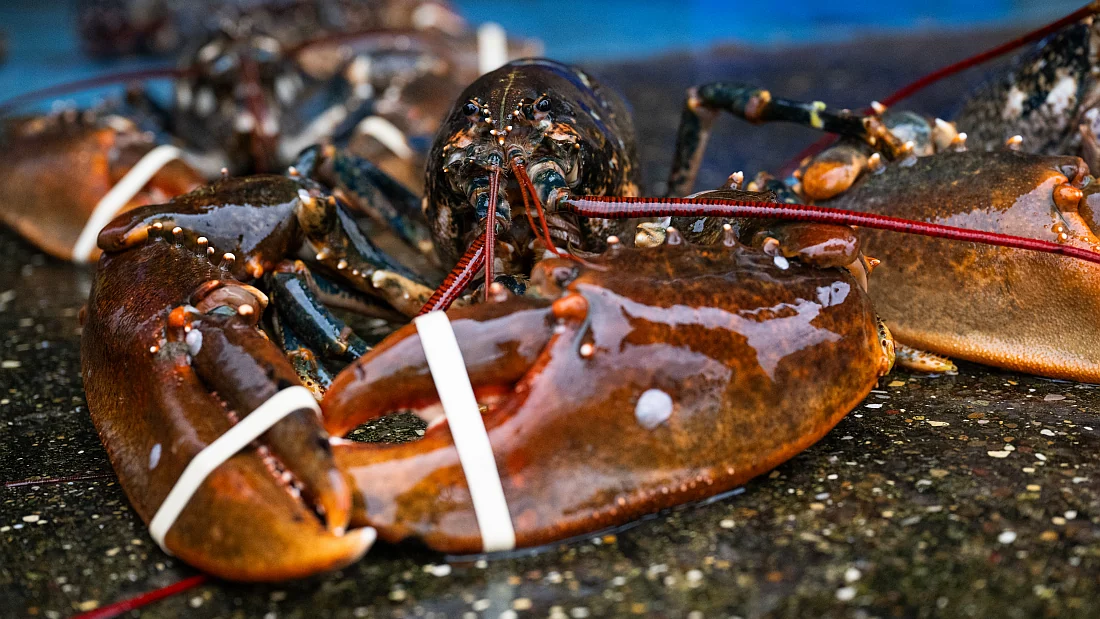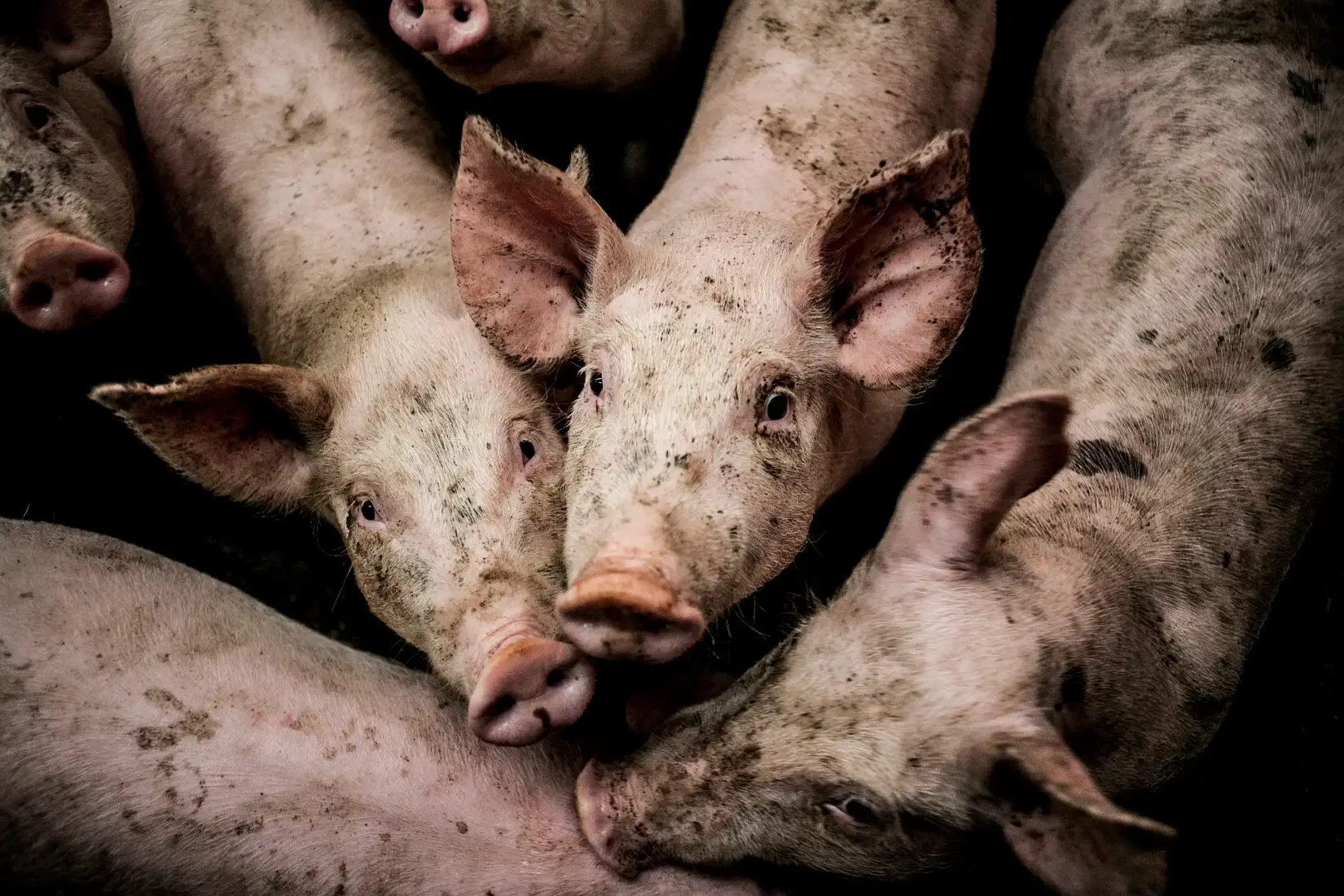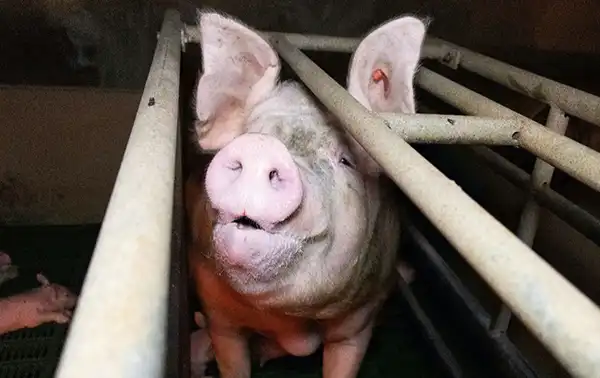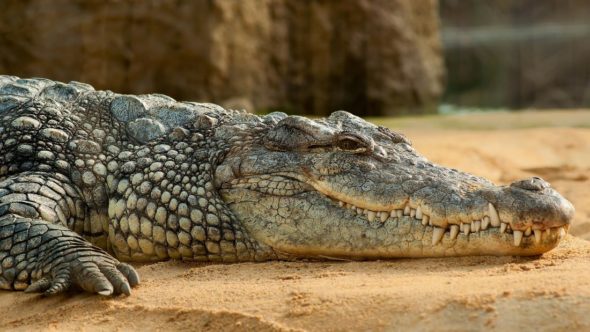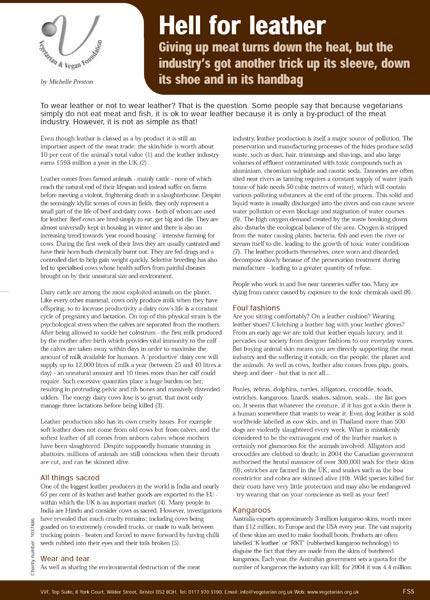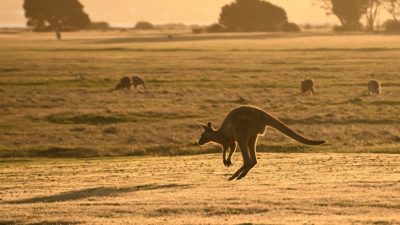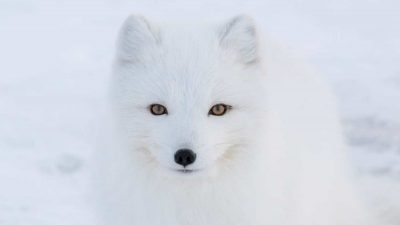Leather
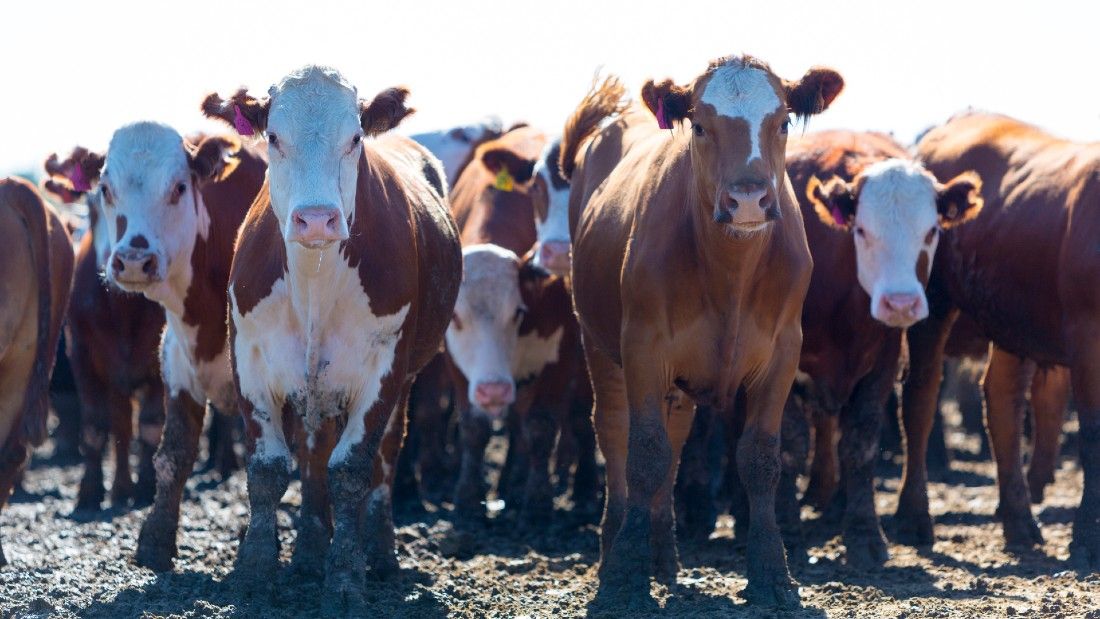
Leather “is the end product of tanning the rawhide [skin] of an animal to make it durable yet very flexible. Leather is commonly made from cattle hide, though the skins from almost any animal (mammals, amphibians, reptiles), including exotic animals like ostriches, kangaroos, pythons and even camels can be tanned into leather.”2World of Leathers. 2020. What is Leather? Its Origins, Forms, and Uses. Available at: https://www.worldofleathers.com/leather-guide-and-info/what-is-leather-its-origins-forms-and-uses/ [Accessed 15 December 2020].
There is barely an industry operating that doesn’t use leather in at least some of its products. But, the most common uses for leather are in the fashion industry. The following items are often made from, or contain, leather:
- Clothing (jackets, skirts, trousers, footwear)
- Accessories (handbags, briefcases, wallets, belts, gloves, watch straps)
- Sporting goods (sport shoes and boots, footballs, traditional basketballs, baseballs, cricket balls etc)
- Furniture (sofas, chairs, cushions)
- Automobiles (car seats and furnishings)
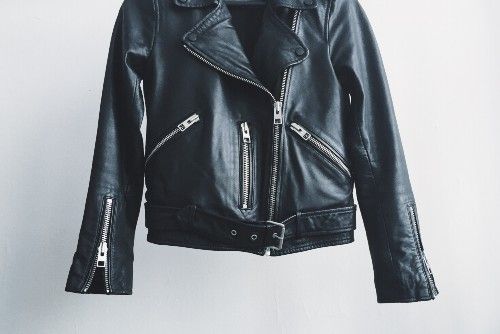
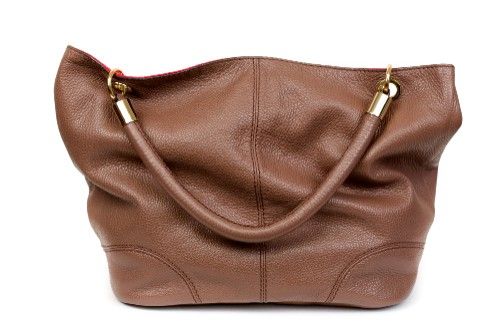
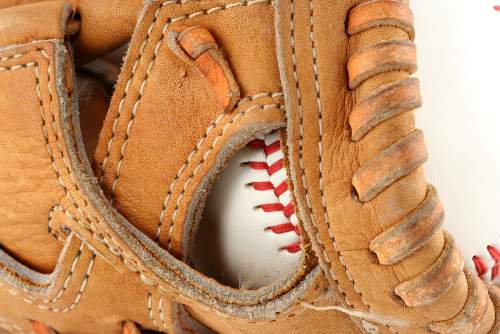
An estimated one billion animals are killed annually for their skin. The US is the biggest exporter of bovine skins, accounting for 26 per cent of the trade. In 2015, China was importing the most skin and rawhide at 38.9 per cent.72. Liberty Leather Goods. 2020. The Leather Industry – An Overview of Fascinating Facts. Available at: https://www.libertyleathergoods.com/leather-industry/ [Accessed 15 December 2020].
The five countries which produce the most leather are China, Brazil, Italy, Russia and India. China produces more than twice as much leather as second place Brazil and is responsible for 25 per cent of global leather production, producing around 6 million square feet of leather annually.2Liberty Leather Goods. 2020. The Leather Industry – An Overview of Fascinating Facts. Available at: https://www.libertyleathergoods.com/leather-industry/ [Accessed 15 December 2020].8Countries Today. 2019. Top Leather Producing Countries and Industries in Which it Used. Available at: https://www.countriestoday.com/leather-producing/ [Accessed 15 December 2020].
Unfortunately China is also one of the countries with the worst animal welfare standards, with few penalties for animal abuse. According to PETA: “In addition to the cows, sheep and other animals killed for China’s leather trade, an estimated 2 million cats and dogs are also killed there each year for their skins.”9PETA UK. 2020. The Leather Industry. Available at: https://www.peta.org.uk/issues/animals-not-wear/leather/ [Accessed 15 December 2020]. An undercover investigation filmed dogs being bludgeoned to death and skinned for leather.10PETA UK. 2020. Dogs Bludgeoned and Killed for Leather. Available at:‘ https://secure.peta.org.uk/page/17729/petition/1 [Accessed 15 December 2020].
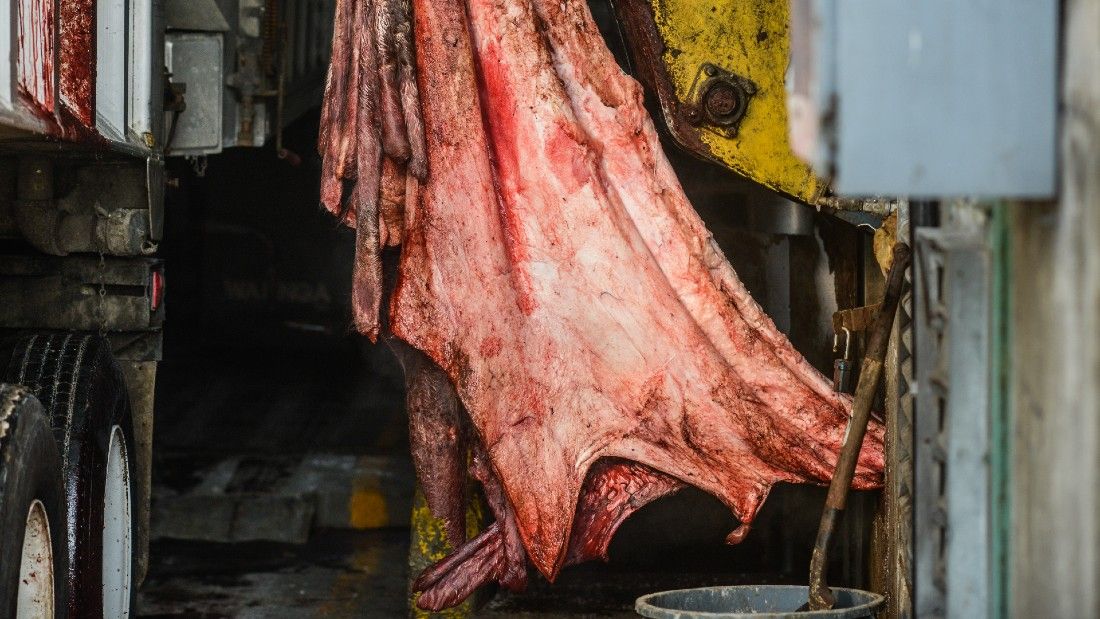
After an animal has been slaughtered – usually for meat or dairy – their skin is torn from their body.
The skin or “rawhide” is then exported to the country which will process it into leather.
To be made suitable for human use, the skin needs to be “tanned”. This means treating it with various chemicals. Leather can be vegetable-tanned, synthetic-tanned, alum-tanned, aldehyde-tanned and chromium-tanned.12Tarantola, A. 2014. How Leather Is Slowly Killing the People and Places That Make It. Gizmodo. Available at: ‘https://gizmodo.com/how-leather-is-slowly-killing-the-people-and-places-tha-1572678618 [Accessed 15 December 2020].
“Once the tanning operation proper has been completed, the leather is allowed to dry. Then the ‘crusting’ procedure begins. The leather may be thinned, retanned, and lubricated before being colored, softened, and shaped.”6Tarantola, A. 2014. How Leather Is Slowly Killing the People and Places That Make It. Gizmodo. Available at: ‘https://gizmodo.com/how-leather-is-slowly-killing-the-people-and-places-tha-1572678618 [Accessed 15 December 2020].

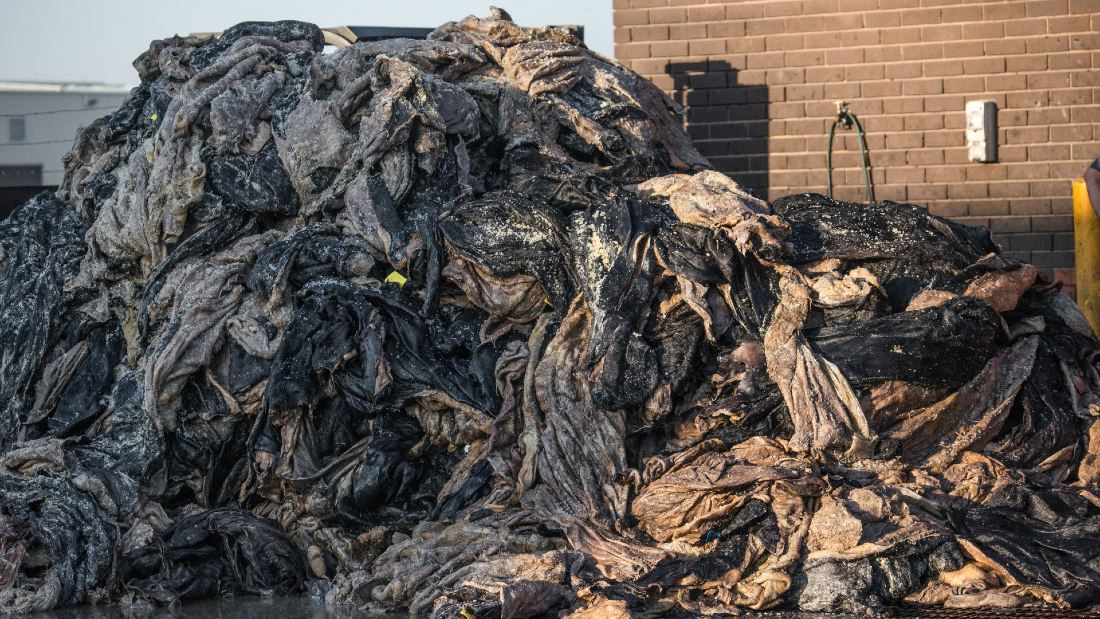
Unlike with fur farming where the animals are killed for a single purpose, the bodies of animals killed for leather are often also used for meat. There is therefore a misconception that leather is a byproduct and by purchasing leather products we are just using what would have been wasted.
However, it is too simplistic to view leather as purely a byproduct of the meat and dairy industry. Leather is a big business in its own right:
“In 2017, the value of international trade of raw hides and skins, part-finished and finished leather was $25.6 billion. The international value of leather goods, footwear, bags and apparel were valued at $130.64 billion.”18Leather UK. 2019. Leather trade. Available at: https://leatheruk.org/help-and-resources/leather-trade/ [Accessed 15 December 2020].
Between 2008 and 2018 the turnover of British leather manufacturers has risen from £745 million to £1.06 billion.19Statista. 2020. Annual turnover of leather and related products manufacturers in the United Kingdom (UK) from 2008 to 2018. Available at: https://www.statista.com/statistics/292317/manufacture-of-leather-products-total-turnover-in-the-united-kingdom-uk/ [Accessed 15 December 2020]. The UK government considers its international leather trade an important aspect of the economy20Department for International Trade & The Rt Hon Elizabeth Truss MP. 2020. Demand for handmade UK luxury leather bags spike in Japan. Gov.uk. Available at: https://www.gov.uk/government/news/demand-for-handmade-uk-luxury-leather-bags-spike-in-japan [Accessed 15 December 2020]. , with demand increasing year on year:
“Projections tell us that in order to keep us in wallets, handbags and shoes, the industry needs to slaughter 430m cows annually by 2025.”21Siegle, L. 2016. Is it time to give up leather? The Guardian. Available at: https://www.theguardian.com/fashion/2016/mar/13/is-it-time-to-give-up-leather-animal-welfare-ethical-lucy-siegle [Accessed 15 December 2020].
To further bury the myth that leather is a byproduct, in some instances the animal’s skin has more value than its flesh. This is the case with ostrich farming in South Africa where, “the skins account for some 80% of the slaughtered bird’s value.”22Carter, K. 2008. Don’t hide from the truth. The Guardian. Available at: https://www.theguardian.com/lifeandstyle/2008/aug/27/ethicalfashion.leather [Accessed 15 December 2020]. In India, cows are raised and slaughtered specifically for their skin.
With so much money involved in the leather trade, it’s not hard to imagine that the industry would want to continue even if animals weren’t killed for meat and dairy. At the very least, leather subsidises the meat and dairy industry, therefore making animal exploitation more profitable for those in the business.
Cows
The majority of leather comes from slaughtered dairy and beef cows. See the pages below to find out how these animals are farmed and killed:
The leather industry involves an additional horror. In order to acquire the softest, most supple and therefore “luxurious” leather, it is often taken from “newborn or even unborn calves, cut prematurely out of their mother’s wombs.”1Carter, K. 2008. Don’t hide from the truth. The Guardian. Available at: https://www.theguardian.com/lifeandstyle/2008/aug/27/ethicalfashion.leather [Accessed 15 December 2020]. What life is so cheap that before he or she has even had a chance to breathe fresh air, their life is taken in the name of fashion?
Cows in India
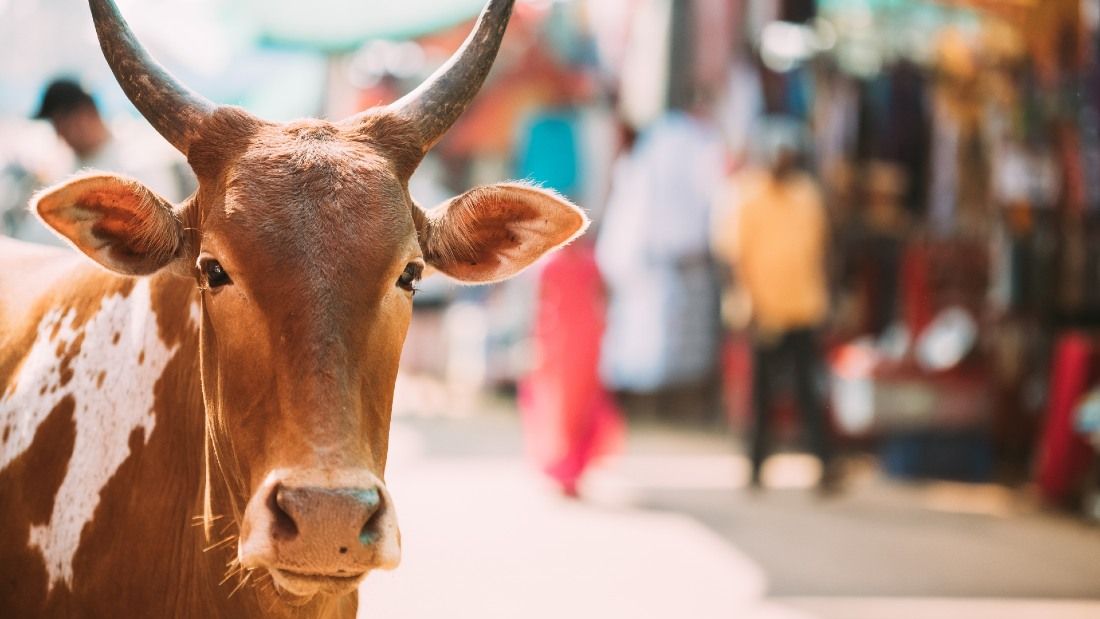
Unlike in the rest of the world, the majority of the cows used for India’s leather trade are not raised for beef or dairy (most of India’s beef comes from water buffaloes). They are specifically bred for leather.
Because cows are considered sacred by Hindus and a symbol of Indian culture, it is illegal to slaughter a healthy cow in all but a handful of states in India, where a license is required.2Hiranandani, A. 2010. India’s Holy Cash Cow. New Internationalist. Available at: https://newint.org/columns/currents/2010/07/01/india-leather-cows [Accessed 16 December 2020]. In the western state of Gujarat, you can even get a life sentence for doing so.3BBC. 2017. Gujarat: India state approves life term for killing cows. BBC News. Available at: https://www.bbc.com/news/world-asia-india-39454607 [Accessed 16 December 2020].
But despite India’s supposed respect for cows, it still manages to be one of the world’s biggest suppliers of leather, exporting over $5 billion worth of leather and leather products in 2019-2020.4India Brand Equity Foundation. 2020. Leather Industry And Exports. Available at: https://www.ibef.org/exports/leather-industry-india.aspx [Accessed 16 December 2020]. So how does a nation with such stringent slaughter laws still manage to be one the largest leather traders?
It’s because most of the laws are ignored and seldom enforced.
A cow in India has to be deemed “fit for slaughter” which usually means unwell in some way. Therefore healthy cows are deliberately and cruelly maimed and injured so they can be legally killed.5Wilkes, T. & Bhardwaj, M. 2017. Cattle slaughter crackdown ripples through India’s leather industry. Reuters. Available at: https://www.reuters.com/article/us-india-politics-religion-insight/cattle-slaughter-crackdown-ripples-through-indias-leather-industry-idUSKBN1951OE [Accessed 16 December 2020].
The majority of slaughter takes place in illegal abattoirs2Hiranandani, A. 2010. India’s Holy Cash Cow. New Internationalist. Available at: https://newint.org/columns/currents/2010/07/01/india-leather-cows [Accessed 16 December 2020]. and millions of cows are transported across India from states where slaughter is illegal to the states where it isn’t, where, if they don’t perish on the journey, they face their death.6PETA India. 2020. Leather. Available at: https://www.petaindia.com/issues/animals-used-for-clothing/leather/ [Accessed 16 December 2020].
Some are crammed into transport vehicles so overcrowded that they often suffer broken bones and die from heat exhaustion and suffocation. Others are even made to walk for hundreds of miles across states without food and water.2Hiranandani, A. 2010. India’s Holy Cash Cow. New Internationalist. Available at: https://newint.org/columns/currents/2010/07/01/india-leather-cows [Accessed 16 December 2020]. If they collapse, they systematically have their tails broken at each joint and have tobacco, salt and chili rubbed in their eyes to force them to their feet.6PETA India. 2020. Leather. Available at: https://www.petaindia.com/issues/animals-used-for-clothing/leather/ [Accessed 16 December 2020].
Even though India claims to revere the cow, until the laws are actually enforced, this is just lip service to the Hindu majority. The only way to avoid cruelty is to avoid leather.
Kangaroos
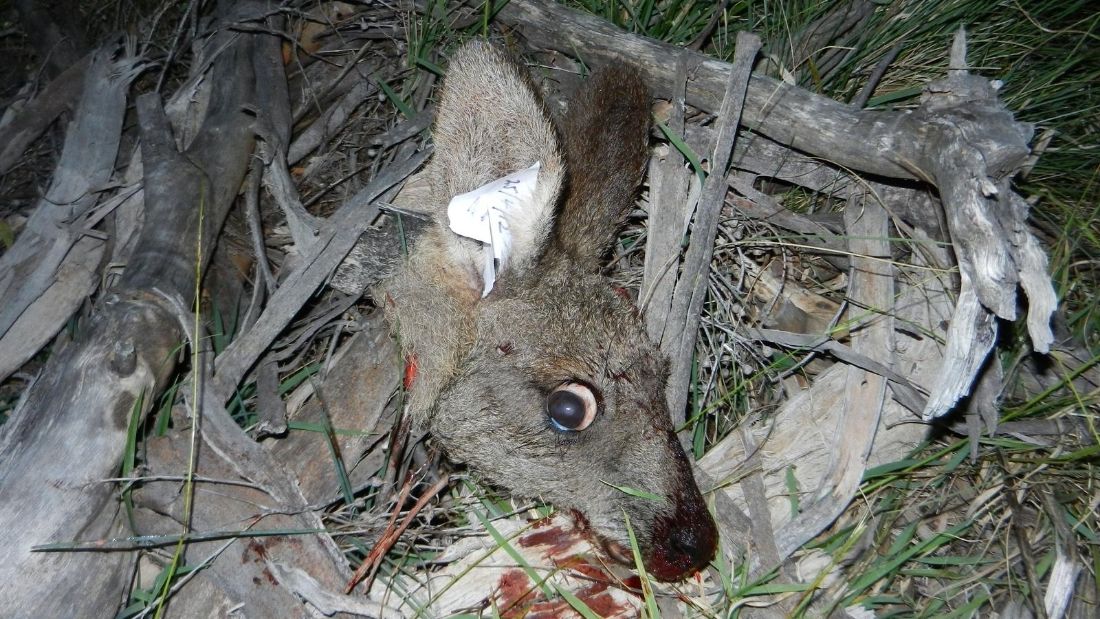
Cows are not the only victims of the leather trade. Viva! has been successfully campaigning against the slaughter of kangaroos for years.
Australia exports approximately 3 million kangaroo skins, worth more than £12 million, to Europe and the US every year. The vast majority of these skins are used to make football boots. Products are often labelled ‘K leather’ or ‘RKT’ (rubberised kangaroo technology) to disguise the fact that they are made from the skins of butchered kangaroos. Each year, the Australian government sets a quota for the number of kangaroos and wallabies the industry can kill; for 2019 it was 6.2 million.7Department of Agriculture, Water and the Environment. 2018. Macropod quotas and harvest for commercial harvest areas in NSW, QLD, SA and WA – 2019. [PDF] Government of Australia. Available at: https://www.environment.gov.au/system/files/pages/ee20f301-6c6c-44e4-aa24-62a32d412de5/files/kangaroo-statistics-states-2018.pdf [Accessed 15 December 2020].
Kangaroos are shot at night in the vast outback and hunters are supposed to adhere to a Code of Practice, a guideline which is neither legally-enforceable nor linked to the Australian Prevention of Cruelty to Animals Act. According to the Code, to kill kangaroos ‘humanely’ hunters should shoot them once in the head, but frequently the animals may be shot in the throat, the neck, or have their jaws blown off. An investigation by Viva! revealed that official numbers for the kill do not include the baby kangaroos who also die as the worthless ‘waste’ of the industry. Tiny joeys are pulled from their dead mothers’ pouches and stamped on, clubbed or simply left to die. Older joeys hop away into the night invariably to die of starvation, predation, cold or neglect.8Gellatley, J. 2004. Under Fire. Viva! Six species of kangaroo are already extinct, with four more species extinct on the Australian mainland and 17 species listed as endangered or vulnerable.919. Viva!. 2017. Kangaroo Factsheet 2017. Available at https://viva.org.uk/materials/kangaroo-fact-sheet-2017/ [Accessed 15 December 2020].
Crocodiles
Millions of crocodiles are slaughtered every year for the meat and skin. Find out more about how crocodiles are farmed by lciking the link below:
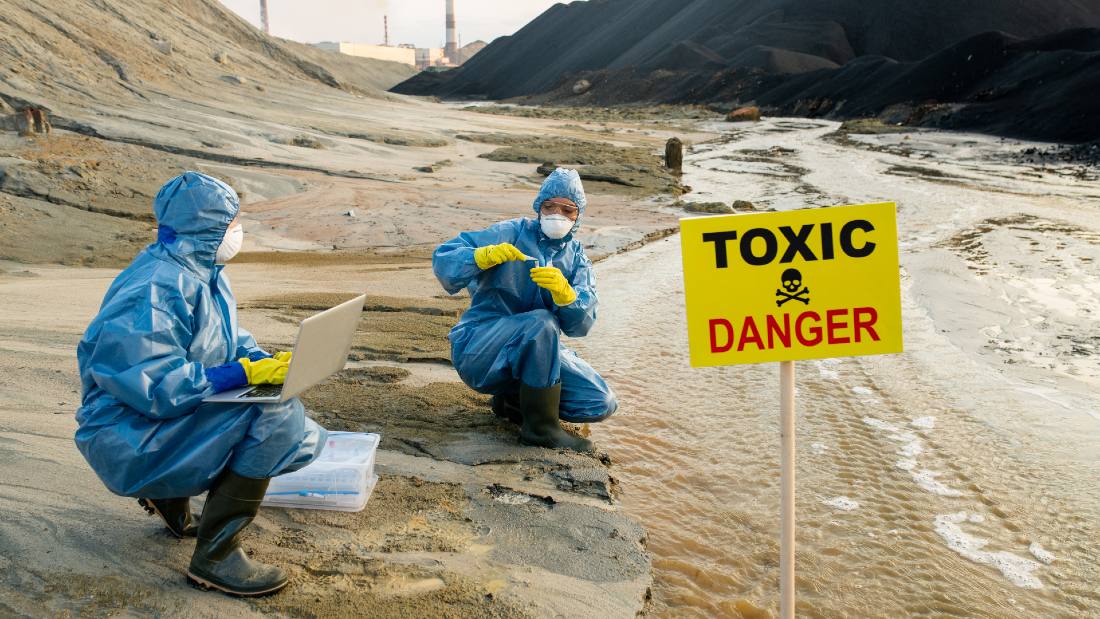
The leather industry shares its devastating environmental impact with the dairy and beef industry as that’s where most of the cattle start out. (Click here to read about The Issues.) But as if that wasn’t bad enough, it has its own share of problems.
Toxic leather
The tanning process is extremely toxic. One of the most common tanning methods is using chromium, a carcinogenic chemical which often finds its way into the water table. Although there are stricter regulations concerning its use in Europe and the US, China does not adhere to such rules, and as the largest leather producer, poses a significant risk to the environment. There are safer methods of tanning but “chrome tanning is faster and produces a flexible leather that’s better for high-end bags and coats, so there’s no incentive for factories to switch.”1Carter, K. 2008. Don’t hide from the truth. The Guardian. Available at: https://www.theguardian.com/lifeandstyle/2008/aug/27/ethicalfashion.leather [Accessed 15 December 2020].
A 2014 review of the toxicity of the leather industry found that: “The tanning processes contribute significantly to chemical oxygen demand (COD), total dissolved solids (TDS), chlorides, sulfates and heavy metal pollution.”2Dixit, S., Yadav, A., Dwivedi, P. D., Das, M. 2014. Toxic hazards of leather industry and technologies to combat threat: a review. Journal of Cleaner Production, 87(January), pp 39-49. Available at: https://www.sciencedirect.com/science/article/abs/pii/S0959652614010580 [Accessed 15 December 2020].
The production of leather is not only very inefficient but the resources it does use have a devastating impact on the environment, as Sivaram and Barik tell us:
“[The] leather industry consumes resources and produces pollutants which are toxic and hazardous to the environment. For instance, in leather processing one metric ton of raw material is converted into only 200 kg of usable leather product (comprising 3kg of chromium). The solid and liquid waste includes about 250 kg of nontanned solid waste, 200kg of tanned waste (comprising 3kg of chromium), and 50,000 kg of wastewater effluent (comprising 5 kg of chromium). Altogether, one metric ton of raw material yields only 20% as finished leather product and more than 60% as solid and liquid waste including the highly carcinogenic heavy metal “chromium”.3Sivaram, N. M. & Barik, D. 2019. Toxic Waste From Leather Industries in Barik, D. (ed.) Energy from Toxic Organic Waste for Heat and Power Generation. Pp 55-67. Woodham Publishing. Available at: https://www.researchgate.net/publication/330053682_Toxic_Waste_From_Leather_. Industries [Accessed 15 December 2020].
Types of pollution
Sivaram and Barik identify three main types of pollution caused by the leather industry:
Water waste: Leather is a highly water-intensive industry and “Huge amount[s] of water and pollutants are discharged during the entire tanning process (…) Highly polluted sediments resulting from discharge of chemicals adversely affect the ecological functioning of waterbodies.”3Sivaram, N. M. & Barik, D. 2019. Toxic Waste From Leather Industries in Barik, D. (ed.) Energy from Toxic Organic Waste for Heat and Power Generation. Pp 55-67. Woodham Publishing. Available at: https://www.researchgate.net/publication/330053682_Toxic_Waste_From_Leather_. Industries [Accessed 15 December 2020].
Solid waste: Although leather is touted as a natural and therefore environmentally low-impact product, it actually biodegrades very slowly. Leather particles infiltrate the ground water and soil thereby threatening the local ecology and aquatic systems in the vicinity.3Sivaram, N. M. & Barik, D. 2019. Toxic Waste From Leather Industries in Barik, D. (ed.) Energy from Toxic Organic Waste for Heat and Power Generation. Pp 55-67. Woodham Publishing. Available at: https://www.researchgate.net/publication/330053682_Toxic_Waste_From_Leather_. Industries [Accessed 15 December 2020].
Volatile compounds: “Pollutants such as ammonia, hydrogen sulfide, volatile hydrocarbons, amines, and aldehydes are emitted to the atmosphere from tannery plants as effluents.”3Sivaram, N. M. & Barik, D. 2019. Toxic Waste From Leather Industries in Barik, D. (ed.) Energy from Toxic Organic Waste for Heat and Power Generation. Pp 55-67. Woodham Publishing. Available at: https://www.researchgate.net/publication/330053682_Toxic_Waste_From_Leather_. Industries [Accessed 15 December 2020].
Tanning plants offer some of the worst working conditions imaginable. As is common in the animal agriculture industry, low paid workers with very little options, are forced to work in incredibly dangerous conditions:
“Work within the tannery itself is fraught with dangers—often the result of inadequate or non-existent worker protections. These includes slips and falls on improperly drained floors; exposure to lime, tanning liquor, acids, bases, solvents, disinfectants, and other noxious chemicals; injury from heavy machinery or flaying knives; drowning, being boiled alive, or buried in lime, are all terrifyingly real hazards.”4Tarantola, A. 2014. How Leather Is Slowly Killing the People and Places That Make It. Gizmodo. Available at: ‘https://gizmodo.com/how-leather-is-slowly-killing-the-people-and-places-tha-1572678618 [Accessed 15 December 2020].
One of the biggest dangers posed to workers is chromium exposure. Exposure to chromium “has been linked to increased rates of asthma, bronchitis, polyps of the upper respiratory tract, pharyngitis, and the enlargement of the hilar region and lymph nodes.”4Tarantola, A. 2014. How Leather Is Slowly Killing the People and Places That Make It. Gizmodo. Available at: ‘https://gizmodo.com/how-leather-is-slowly-killing-the-people-and-places-tha-1572678618 [Accessed 15 December 2020]. Chromium is a proven carcinogen, with its inhalation “resulting in an increased risk of lung cancer.”5Environmental Protection Agency. 2000. Chromium Compounds. EPA. Available at: https://www.epa.gov/sites/production/files/2016-09/documents/chromium-compounds.pdf [Accessed 15 December 2020].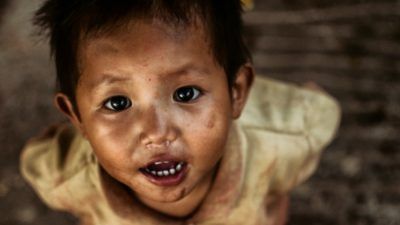
Pulmonary irritant effects following inhalation of chromium dust can include: asthma, chronic bronchitis, chronic irritation, chronic pharyngitis, chronic rhinitis, congestion and hyperemia, polyps of the upper respiratory tract, tracheobronchitis, and ulceration of the nasal mucosa with possible septal perforation.6Agency for Toxic Substance & Disease Registry. 2013. Chromium Toxicity. Available at: https://www.atsdr.cdc.gov/csem/csem.asp?csem=10&po=10 [Accessed 15 December 2020].
In 2014, 30 children under 14-years-old were discovered being forced to work at a leather bag factory in India, working 12 hours every day. It is thought that many more children are in identical circumstances, all so that consumers can get cheap leather goods.7Express News Service. 2014. 30 child workers rescued from Bangalore leather units. The Indian Express. Available at: https://indianexpress.com/article/cities/bangalore/30-child-workers-rescued-from-bangalore-leather-units/ [Accessed 15 December 2020].
| Name of the toxic chemical | Chemical formula | Target organs |
| Anthracene | C14H10 | Kidney, liver, fat, and carcinogen |
| Azo dyes (Orange II) | C16H11N2NaO4S | Blood, liver, testes, and carcinogen |
| Benzyl butyl phthalate | C19H20O | Eyes, lungs, liver, reproductive system |
| Bis(2-ethylhexyl) phthalate (DEHP) | C24H38O | Liver and testes |
| Chromium | Cr | Kidney, CNS, hematopoietic system |
| Cobalt dichloride | CoCl | Lungs, liver, kidney, heart, skin |
| Di-butyl phthalate (DBP) | C16H22O | Eyes, lungs, gastrointestinal tract, teste |
| Formaldehyde | CH2O | Eyes, lungs, and carcinogen |
| Arsenic | As | Liver, kidneys, skin, lungs, lymphatic system, and carcinogen |
| Methyl isothiazolinone | C4H5NOS | Skin, eyes, and carcinogen |
| N-Methyl pyrrolidone | C5H9NO | Eyes, kidney, lymphatic system, liver, lung, testes |
| Nonyl phenol | C15H24O | Blood, lungs, eyes, skin, CNS, kidneys, and low biodegradability |
| Organotin compounds (dibutyltin oxide) | C8H18OSn | Gastrointestinal tract, liver, and carcinogen |
| Short chain chlorinated paraffins (PBT) | (SCCPs, C10–13) | Liver, kidney, thyroid, and carcinogen |
| Sodium dichromate | Na2Cr2O | Blood, kidneys, heart, lungs, eyes, and carcinogen |
A table of the toxic chemicals used in the leather industry and their impact on human health.3Sivaram, N. M. & Barik, D. 2019. Toxic Waste From Leather Industries in Barik, D. (ed.) Energy from Toxic Organic Waste for Heat and Power Generation. Pp 55-67. Woodham Publishing. Available at: https://www.researchgate.net/publication/330053682_Toxic_Waste_From_Leather_. Industries [Accessed 15 December 2020].
Considering leather’s ubiquitous nature in the clothing industry – leather patches and tags even find their way onto non-leather clothing items such as jeans and caps – you might think that it’s hard to avoid. But with a little forethought, nowadays there are plenty of innovative alternatives when it comes to shoes and accessories.
High street shops including Marks and Spencer, H&M, Primark and Shoezone sell many faux leather shoes and brands often have vegan-friendly product lines. These include: Asics, Nike, Doc Marten, Birkenstock, New Balance, VivoBarefoot, Converse but to name a few. The FAQ section on the company’s website is usually a good place to find out what goes into their shoes and if any are suitable for vegans.
100 per cent vegan companies:
| Company | Products | Website |
| Alternative Stores | Footwear | https://www.alternativestores.com/vegan-shoes/ |
| Amour Vert (Veja) | Clothing and footwear | https://amourvert.com/ |
| Avesu Vegan Shoes | Footwear | https://www.avesuveganshoes.com/ |
| Beyond Skin | Footwear and accessories | https://beyond-skin.com/ |
| Eco Vegan Shoes | Footwear and accessories | https://www.eco-vegan-shoes.com/ |
| Ethical Wares | Footwear, clothing and accessories | https://www.ethicalwares.com/ |
| Ethletic | Footwear | https://ethletic.com/ |
| Freerangers | Footwear and accessories | http://www.freerangers.co.uk/ |
| Matt and Nat | Footwear, clothing and accessories | https://mattandnat.com/ |
| Nae Vegan Shoes | Footwear and accessories | https://www.nae-vegan.com/en/ |
| Veganline | Footwear, clothing and accessories | https://veganline.com/ |
| Vegetarian Shoes | Footwear and accessories | https://www.vegetarian-shoes.co.uk/ |
| Viva!Shop | Accessories | https://vivashop.org.uk |
| Will’s Vegan Shoes | Footwear and accessories | https://wills-vegan-shoes.com/ |
Faux leather often faces criticism for being unsustainable1Sancroft. 2018. Shedding leather – not necessarily a sustainable solution? Available at: https://sancroft.com/2018/05/11/shedding-leather-not-necessarily-a-sustainable-solution/ [Accessed 15 December 2020]. and many products are indeed made using petrochemicals, the extraction of which has a damaging effect on the environment and these petroleum-based products do not biodegrade. However, removing the animal exploitation from the process is still a large step in the right direction. As technological advances are made, faux leather will become more and more environmentally friendly. It is already possible to buy sustainable products made from mushroom, pineapple, bio-fabricated and recycled materials.2Stanton, A. 2020. These Leather Alternatives Are Changing The Future Of Sustainable Fashion. The Good Trade. Available at: https://www.thegoodtrade.com/features/sustainable-vegan-leather-alternatives [Accessed 15 December 2020].3Hirsch, S. 2020. These Companies Are Making Vegan Leather Out of Plants Instead of Plastic. Green Matters. Available at: https://www.greenmatters.com/p/vegan-leather-made-from-plants [Accessed 15 December 2020].
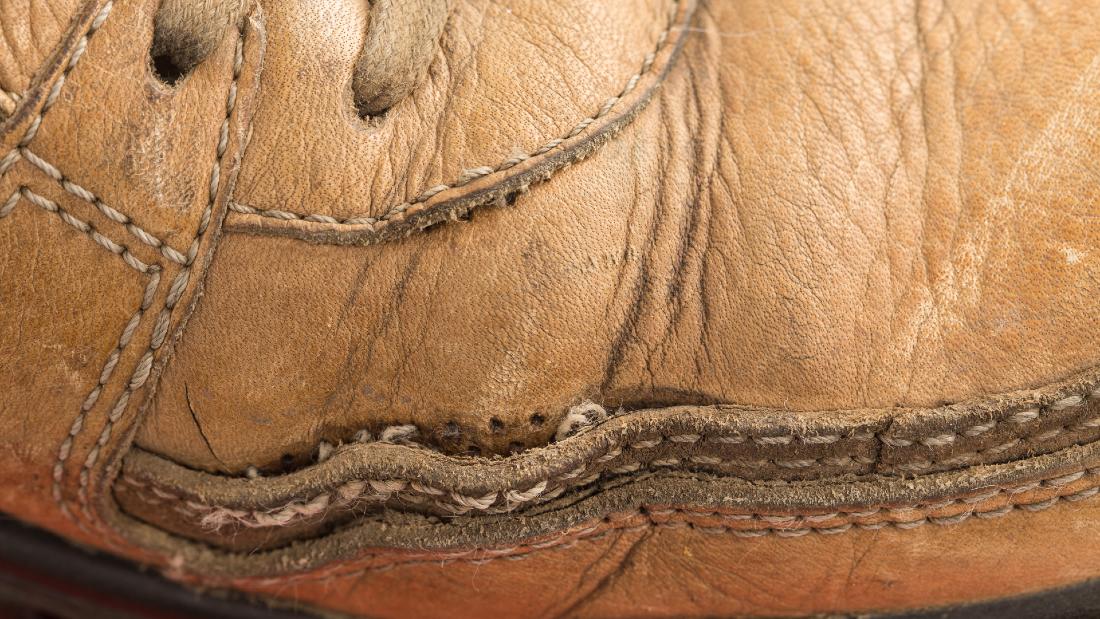
Check the label
Ideally all clothes and accessories should tell you what they are made of. Real leather items usually like to boast that they’re “genuine”.
Before you go shoe shopping, get familiar with the symbols here and if you’re not sure, or the shoe isn’t labelled, ask a member of staff. A useful store will be able to look up the materials for you.
Inspect the material
Real leather is the skin of an animal so it is not usually uniform. It might vary in pattern, colour and texture. If you look closely you might even see pores. When you crease real leather it is more likely to produce small wrinkles. Faux leather might have a more consistent pattern and feel more like plastic (unless it is made from one of the natural materials listed above).
Examine the edges
Once again, real leather is likely to be less uniform than faux leather, with rougher edges.
Smell it
Real leather has a distinctive smell. If you haven’t owned anything leather in the past, this might mean you have to practice with items in the store that you know are actually dead animal skin.
As faux leather manufacturers get better at producing leather alternatives, it is becoming harder to tell them apart. The best way to ensure you’re not accidentally buying real leather is to shop with a company you trust or one that specialises in vegan-friendly products, like those listed above.

